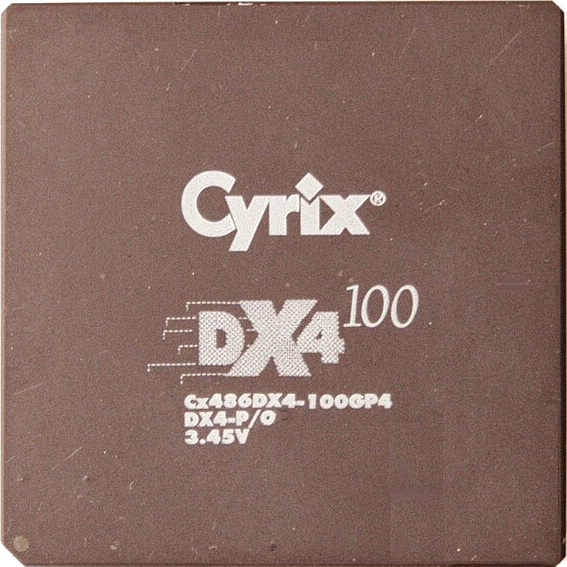I really wish that I was born early so I’ve could witness the early years of Linux. What was it like being there when a kernel was released that would power multiple OSes and, best of all, for free?
I want know about everything: software, hardware, games, early community, etc.
My first experience was with two floppy images I found on “So much shareware! Vol.2”.
It was labeled Linux 0.99b, no distro. It was not of much use to me at the time.
A couple of years later I got my hands on Slackware 2.0 on CD. So much time spent compiling your own kernel, because no modules and the whole thing had to fit in main memory (640kB). So much time spent fiddling with xf86config hoping you wouldn’t fry your CRT.
Good times.
Then came gentoo, which had package management. No more did you have to browse sourceforge for endless dependencies to install something. No more did you have to re-install slackware on your root partition to update. So user-friendly in comparison.
We spent a lot of time on IRC.
MUDs kind of bridged the gap between IRC and games.
I remember spending a lot of time playing abuse, snes9x, quake + team fortress and quake2 + action quake.
It was S.u.S.E. Linux 5.3
Great manual.
I was lucky that my NIC, graphics and sound card were supported out of the box.
But everything was still much worse than on Windows.
But I could taste the freedom.
Now all my devices run on Linux (except my Nintendo Switch).
Yeah those manuals were great i still have mine.

Prior to the website rpmfind.net, installing software was to put it mildly, a chore. Due to package dependency, you’d start the compile, and it would fail due to missing libraries. You’d then go out and find those libraries, only to have them fail on compile…due to missing libraries…it would go on like until you finally were able to compile the original package - at this point though you compiled it out of sheer spite for the universe that put you in that position.
I rate the experience a solid 5/7
Alrighty, old Linux user from the earliest of days.
It was fun, really great to have one-on-one with Linus when Lilo gave issues with the graphic card and the screen kept blank during booting.
It was new, few fellow students where interested, but the few that did, all have serious jobs in IT right know.
Probably the mindset and the drive to test out new stuff, combined with the power Linux gave.
Didn’t expect to see a legend just scrolling here. Thank you for your contributions to computer science.
OMG… BOFH! I need to go find those stories now :-)
The BOFH and his PFY are still helping their users…
stacks of diskettes, for every operating system.
would routinely spend hours doing an install only to hit a block and have to reinstall DOS to have modem access to get help on usenet. Then hours of reinstalling to move forward and repeat on another issue.
I really loved it though, it was a massive upgrade over DOS and windows on a 286.
Well, I was an Amiga user. That was already unix-like, preemptive multitasking, etc. It was fading fast in the early nineties, and while i was already working in I.T., I was not interrsted in using Windows 3.11 and 95, so I began playing with Slackware Linux. I figured it was a good way to get comfortable with “real” I.T…
I learned Bash and had to compile most of the software i wanted to try. Since, like all programmers, I’m lazy, I wrote some simple scripts to build the code and make them into packages (tgz) for Slackware. This took tedium out of the work, and i could use the packkage manager to install and remove them.
Those were rough days for desktop users, though. I really had to use windows when i needed to pass output to “normies”. I tried several window manager and desktops, and eventually landed on Ubuntu.
Well, I was an Amiga user.
Based. But on a serious note, what machine did you have/use? Could you install Linux on the classic Amiga machines? I’ve always thought about buying an Amiga 1200.
A stock Amiga 1200 wouldn’t allow you to run Linux, because the CPU doesn’t have an MMU (memory management unit). With a turbo card installed with at least a 68030 and enough RAM you could run Linux on a 1200 though.
https://www.debian.org/ports/m68k/ has a nice little intro and the key requirements.
MMU and HD space were the biggest issues. One of those has pretty much gone away with time.
The only OS that was solid as a desktop OS back then, with good usability, was BeOS. Both MacOS and Windows had stability problems (although NT/2000 were much better, but lacked app/game compatibility), and Linux was a nightmare to update and run (lots of compiling too). So the OS of choice back then for me, was BeOS. I could do everything I needed with it too.
I never got to run BeOS (well…when it was modern), but it’s really depressing just how insanely better it was than the competition. Ditto Amiga.
The danger of poorly configuring your XF86Config in a way that could irreparably damage your giant CRT monitor was thrilling.
XFree86 was such a tacky name
I started using Linux right in the late 90’s. The small things I recall that might be amusing.
- The installation process was easier than installing Arch (before Arch got an installer)
- I don’t recall doing any regular updates after things were working except for when a new major release came out.
- You needed to buy a modem to get online since none of the “winmodems” ever worked.
- Dependency hell was real. When you were trying to install an RPM from Fresh Meat and then it would fail with all the missing libraries.
- GNOME and KDE felt sincerely bloated. They seemed to always run painfully slow on modern computers. Moving a lot of people to Window Managers.
- it was hard to have a good web browser. Before Firefox came out you struggled along with Netscape. I recall having to use a statically compiled ancient (even for the time) version of Netscape as that was the only thing available at the time for OpenBSD.
- Configuring XFree86 (pre-cursor to X.org) was excruciating. I think I still have an old book that cautioned if you configured your refresh rates and monitor settings incorrectly your monitor could catch on fire.
- As a follow on to the last statement. I once went about 6 months without any sort of GUI because I couldn’t get X working correctly.
- Before PulseAudio you’d have to go into every application that used sound and pick from a giant drop down list of your current sound card drivers (ALSA and OSS) combined with whatever mixer you were using. You’d hope the combo you were using was supported.
- Everyone cheered when you no longer had to fight to get flash working to get a decent web browsing experience.
I don’t recall doing any regular updates
You needed to buy a modem to get online
If you stay offline, you don’t need upgrading to prevent virus or hacking. That’s the norm in the good old days.
<I think I still have an old book that cautioned if you configured your refresh rates and monitor settings incorrectly your monitor could catch on fire.> Are you telling me that one dev for X.org could set someone’s monitor on fire by fucking with four lines of code?
Jesus Christ, thanks for that, I didn’t need to sleep tonight.
Monitors don’t work like that anymore. The ones that could catch on fire are pretty much all in the landfills by now.
All I know is I wish I would’ve stuck with it when I first installed but…alas…I was lazy and too dependent on GUI
In the 90s, it was hard :-)
It made sense to recompile the kernel to make it fit your hardware.
It was a mess to find peripherals that were working with Linux.
I built soooo many kernels. 😅
Back in my day we had to get our Internet at the village Internet well. I remember the dialup modem noises it made as you pulled the bucket up.
I remember kernel panic and dependency hell. But it was also wonderful to get away from win95.
Reading how-tos(may be the source code too) are all you needed. No need to listen random stuff from some random YouTubers. Ppl can read that time. Books and magazines did exist.
How many times did I read the condescending “HOW-TO sound drivers” with it’s condescending opening of “If you must hear biff bark” and it’s virtually always unhelpful content. Maybe one install in 10 would benefit from the pearls of Linux Audio wisdom contained therein, and it was the best available source for YEARS.
I loved reading HOWTOs, they were a bit like scene zines, but the content wasn’t that helpful indeed
First time I format the whole disk, all msdos data (games) lost. I managed to install it then I opened vim to edit a file and I couldn’t get out of vim I know it’s a cliche, but there is real. To get out I have to call a friend, using the landline, the one who lends me the floppy disks (or maybe it was magazine cd) and ask he how to get out, he says, just press Shift and Z twice.











